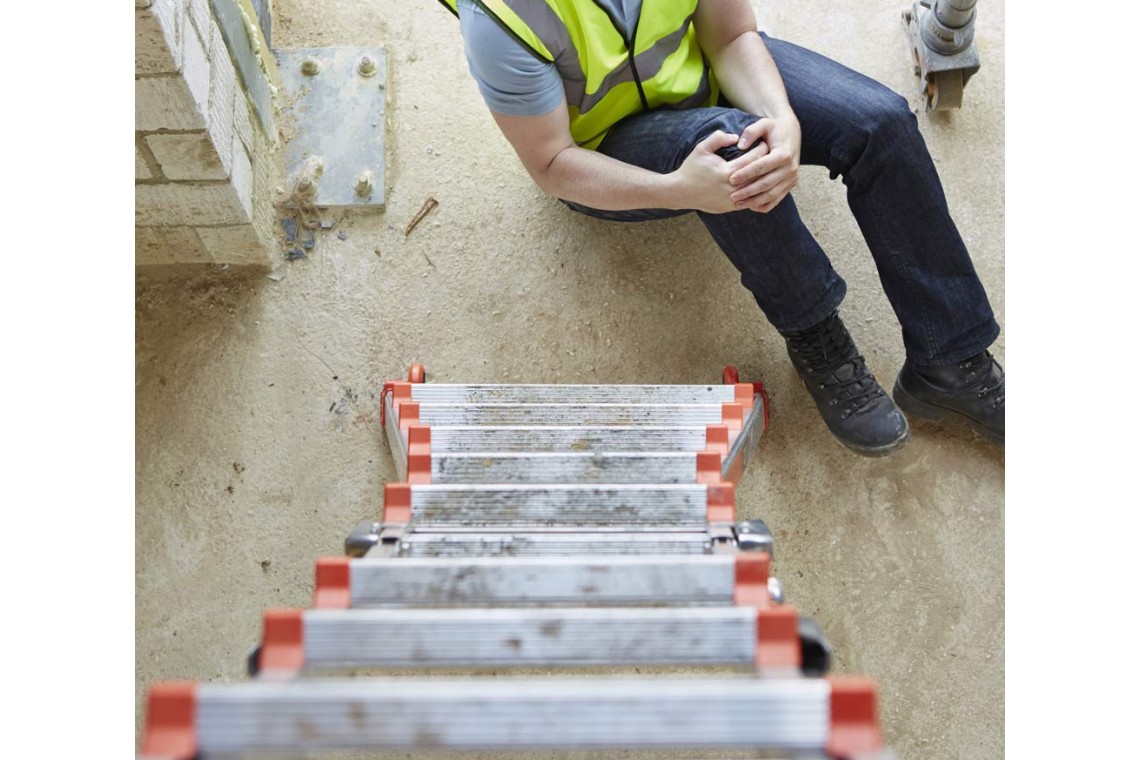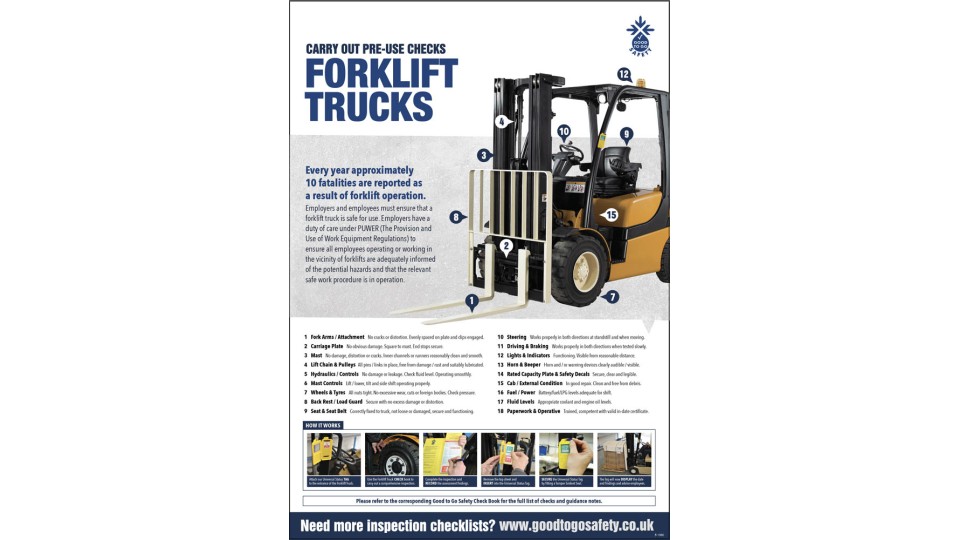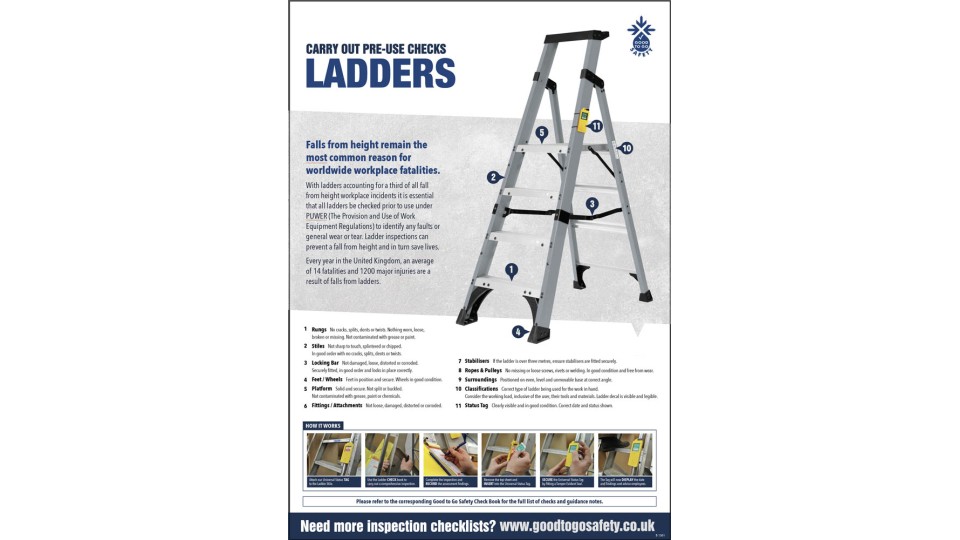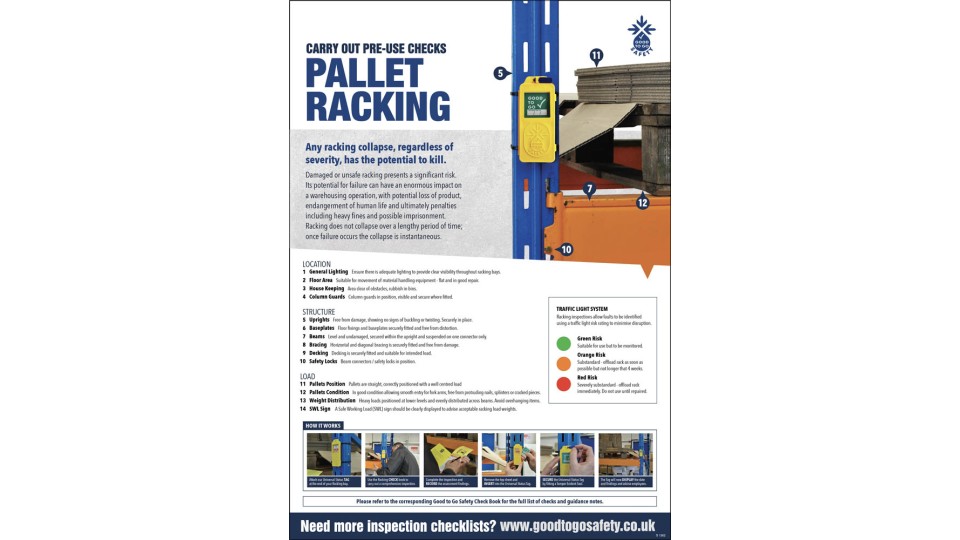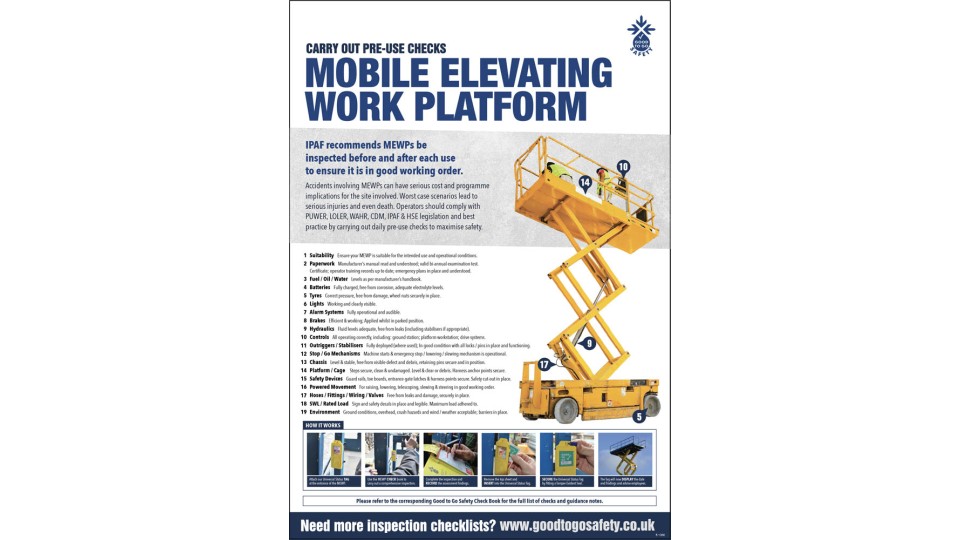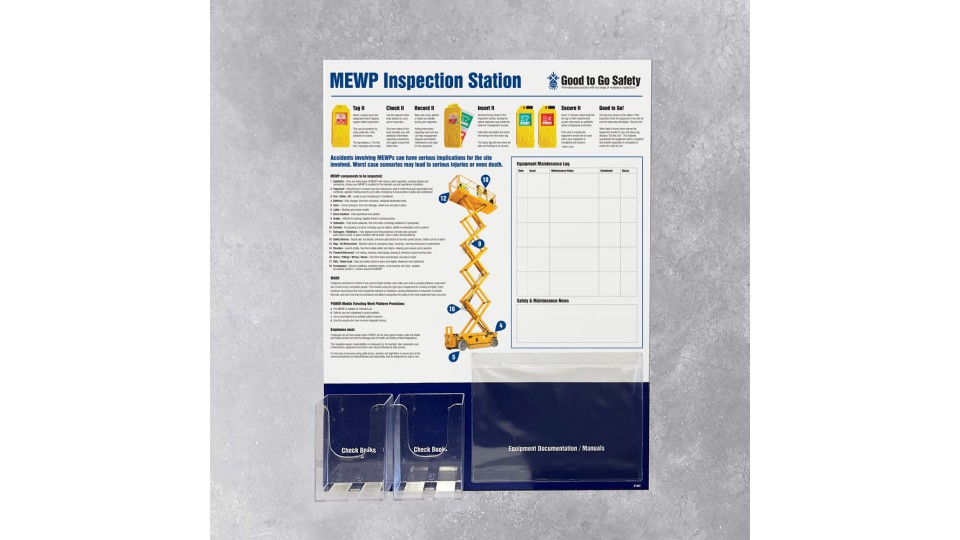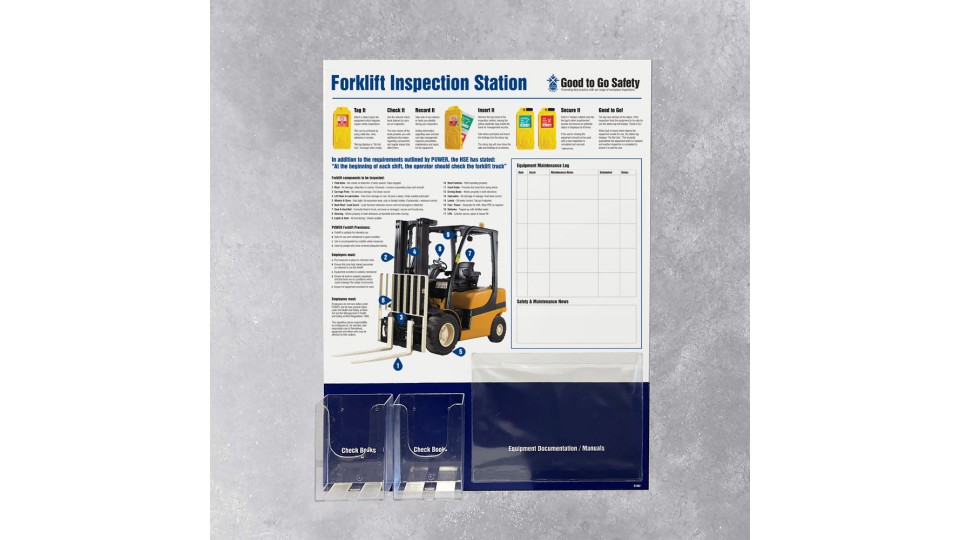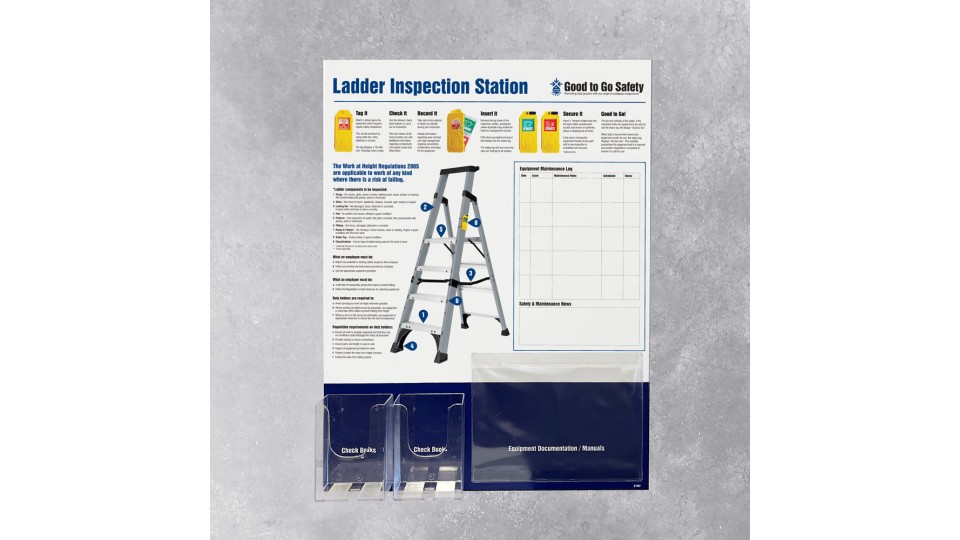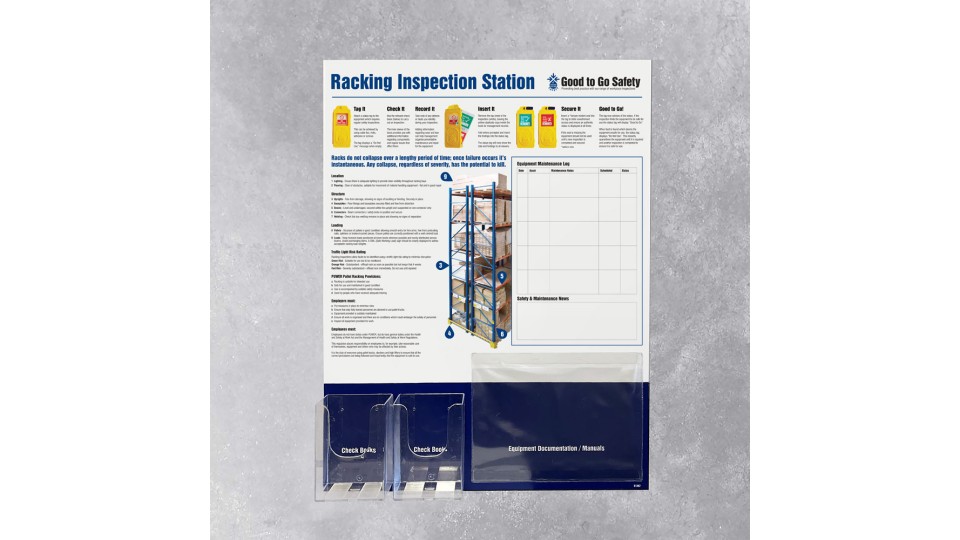Numerous health and safety accidents or incidents occur every day due to equipment being used in the workplace that is improperly managed, maintained or is not made for the intended purpose. Industries such as farming and agriculture, factories, warehouses and construction are all high risk due to numerous equipment types being used daily.
Employers are required to ensure that all the workplace equipment provided to employees is regularly inspected and maintained in safe working order. They are also responsible to make sure that the workers using such equipment are skilled and competent to do the work safely.
Numerous legislations revolve around workplace equipment such as the Provision and Use of Work Equipment Regulations (PUWER), Working at Heights Regulation (WAHR) and Control of Vibration Regulations 2005, require that equipment is:
Suitable for use
Maintained in safe order and inspected it regularly
Examined regularly for wear and tear
Installed properly for safe work
Handled / used correctly and carefully to avoid accidents and / or injuries
At Good to Go Safety and TakeAIM, we provide a range of workplace safety checklists suitable for construction equipment, factory and warehouse safety, the transport industry and farming.
WHY EQUIPMENT SAFETY INSPECTIONS?
Many workplaces are extremely busy places with many moving parts, hazards and heavy machinery. In addition to keeping employees safe, equipment safety checklists can also prevent damage to the site / facility and the products stored within it.
Implementing safety inspections can actually save money in the long run by reducing the likelihood of accidents, injuries, and equipment / property damage. Additionally, inspections can reduce downtime due to unscheduled maintenance.
When employees feel safe in their work environment, they are likely to be more productive and engaged in their work. A culture of safety can also lead to better morale and job satisfaction, which can reduce turnover rates and improve employee retention.
RACKING INSPECTIONS
Without routine inspections and maintenance, pallet racking can be an accident waiting to happen. Even the highest-quality pallet racking needs to be inspected regularly otherwise small issues could escalate and lead to an accident.
Our pallet racking inspections highlight potential problems such as loose nuts and bolts, which could eventually affect the structural stability of the pallet racking.
Damage to the support system, posts, or pallets themselves could also occur if a forklift hits the racking. It doesn’t have to be a massive crash, even a slight bump can compromise the structure and lead to problems. This is why any warehouse owners or staff in charge of warehouse logistics should implement regular inspections and proactive maintenance.
LADDER INSPECTION CHECKLISTS
Ladders are essential tools for reaching heights and completing tasks in various settings, from construction sites, scaffolding, factories and warehouses to homes and offices. They do however, pose a significant risk if used or maintained improperly.
Falls from ladders account for approximately 20% of all fall-related injuries and fatalities in the workplace. Our ladder inspection checklists helps employees check for any visible signs of damage, such as cracks, rust, or missing rungs, and enables employees to quarantine any ladder deemed to be unsafe.
MEWP CHECKLISTS
Mobile elevating work platforms (also known as MEWPs, scissor lifts or cherry pickers) provide an efficient means of accessing work at height tasks. They are now recognised as the preferred means of access across all industry sectors.
To ensure MEWPs are kept in safe working condition and comply with local regulatory and manufacturer’s requirements, they require suitable inspection and maintenance procedures to be adhered to. These may vary from region to region and include but may not be limited to:
1. Daily pre-use inspection;
2. Intermediate inspections and maintenance in accordance with MEWP manufacturer’s instructions;
3. Thorough examinations – six-monthly, annual or as per country requirements ;
4. Where MEWPs are used in remote locations or by individuals with only one or two aging machines, it does not relieve the user and operator of their legal duty to maintain the MEWP in a safe condition.
The use of a defective MEWP or one that has had an unauthorised modification might significantly increase the risk of an incident and personal injury.
OUR EQUIPMENT INSPECTIONS
You can monitor all your workplace equipment including a forklift, ladder, pallet truck, scaffolding, pallet racking, MEWPs, excavators and much more using our workplace safety inspections.
Good to Go Safety is a multi-award winning system that provides companies with paper equipment inspections - the perfect solution when mobile phones are prohibited on site. TakeAIM is the digital version of Good to Go Safety (with many additional features) - a downloadable APP which enables users to complete inspections on their mobile phones and upload them seamlessly to a management dashboard.
Whether you require ad-hoc, daily, weekly or monthly checks to be carried out. Our inspections provide a simple, effective and affordable solution to equipment safety.
Employers are required to ensure that all the workplace equipment provided to employees is regularly inspected and maintained in safe working order. They are also responsible to make sure that the workers using such equipment are skilled and competent to do the work safely.
Numerous legislations revolve around workplace equipment such as the Provision and Use of Work Equipment Regulations (PUWER), Working at Heights Regulation (WAHR) and Control of Vibration Regulations 2005, require that equipment is:
Suitable for use
Maintained in safe order and inspected it regularly
Examined regularly for wear and tear
Installed properly for safe work
Handled / used correctly and carefully to avoid accidents and / or injuries
At Good to Go Safety and TakeAIM, we provide a range of workplace safety checklists suitable for construction equipment, factory and warehouse safety, the transport industry and farming.
WHY EQUIPMENT SAFETY INSPECTIONS?
Many workplaces are extremely busy places with many moving parts, hazards and heavy machinery. In addition to keeping employees safe, equipment safety checklists can also prevent damage to the site / facility and the products stored within it.
Implementing safety inspections can actually save money in the long run by reducing the likelihood of accidents, injuries, and equipment / property damage. Additionally, inspections can reduce downtime due to unscheduled maintenance.
When employees feel safe in their work environment, they are likely to be more productive and engaged in their work. A culture of safety can also lead to better morale and job satisfaction, which can reduce turnover rates and improve employee retention.
RACKING INSPECTIONS
Without routine inspections and maintenance, pallet racking can be an accident waiting to happen. Even the highest-quality pallet racking needs to be inspected regularly otherwise small issues could escalate and lead to an accident.
Our pallet racking inspections highlight potential problems such as loose nuts and bolts, which could eventually affect the structural stability of the pallet racking.
Damage to the support system, posts, or pallets themselves could also occur if a forklift hits the racking. It doesn’t have to be a massive crash, even a slight bump can compromise the structure and lead to problems. This is why any warehouse owners or staff in charge of warehouse logistics should implement regular inspections and proactive maintenance.
LADDER INSPECTION CHECKLISTS
Ladders are essential tools for reaching heights and completing tasks in various settings, from construction sites, scaffolding, factories and warehouses to homes and offices. They do however, pose a significant risk if used or maintained improperly.
Falls from ladders account for approximately 20% of all fall-related injuries and fatalities in the workplace. Our ladder inspection checklists helps employees check for any visible signs of damage, such as cracks, rust, or missing rungs, and enables employees to quarantine any ladder deemed to be unsafe.
MEWP CHECKLISTS
Mobile elevating work platforms (also known as MEWPs, scissor lifts or cherry pickers) provide an efficient means of accessing work at height tasks. They are now recognised as the preferred means of access across all industry sectors.
To ensure MEWPs are kept in safe working condition and comply with local regulatory and manufacturer’s requirements, they require suitable inspection and maintenance procedures to be adhered to. These may vary from region to region and include but may not be limited to:
1. Daily pre-use inspection;
2. Intermediate inspections and maintenance in accordance with MEWP manufacturer’s instructions;
3. Thorough examinations – six-monthly, annual or as per country requirements ;
4. Where MEWPs are used in remote locations or by individuals with only one or two aging machines, it does not relieve the user and operator of their legal duty to maintain the MEWP in a safe condition.
The use of a defective MEWP or one that has had an unauthorised modification might significantly increase the risk of an incident and personal injury.
OUR EQUIPMENT INSPECTIONS
You can monitor all your workplace equipment including a forklift, ladder, pallet truck, scaffolding, pallet racking, MEWPs, excavators and much more using our workplace safety inspections.
Good to Go Safety is a multi-award winning system that provides companies with paper equipment inspections - the perfect solution when mobile phones are prohibited on site. TakeAIM is the digital version of Good to Go Safety (with many additional features) - a downloadable APP which enables users to complete inspections on their mobile phones and upload them seamlessly to a management dashboard.
Whether you require ad-hoc, daily, weekly or monthly checks to be carried out. Our inspections provide a simple, effective and affordable solution to equipment safety.

